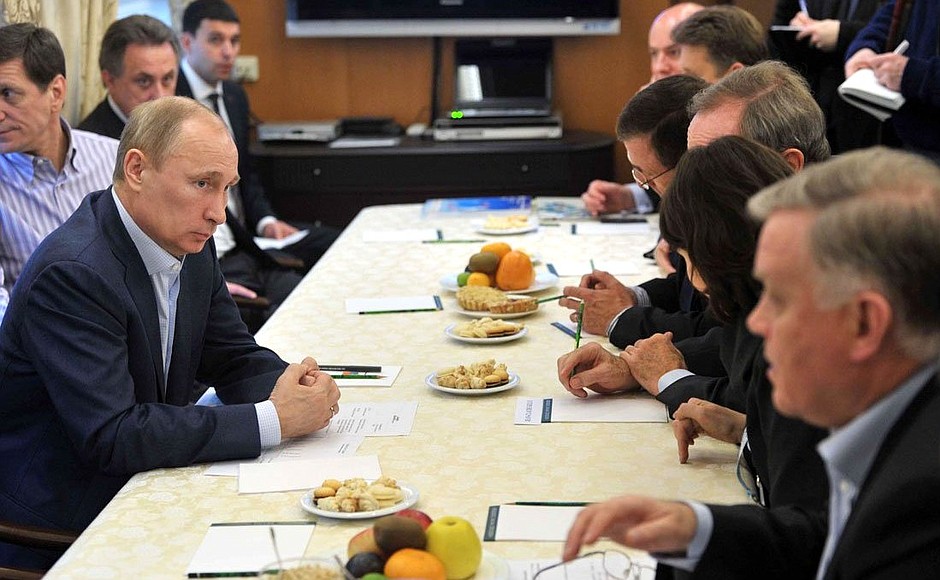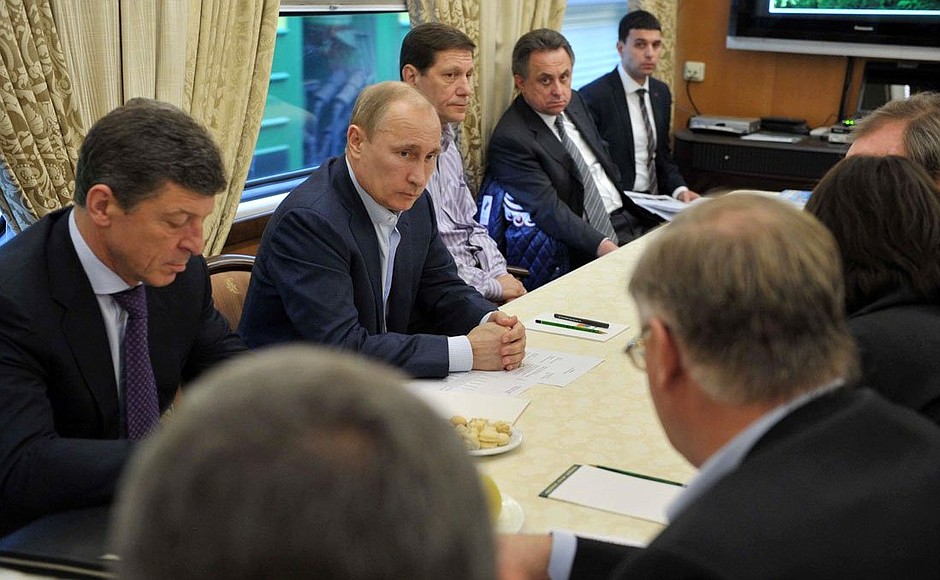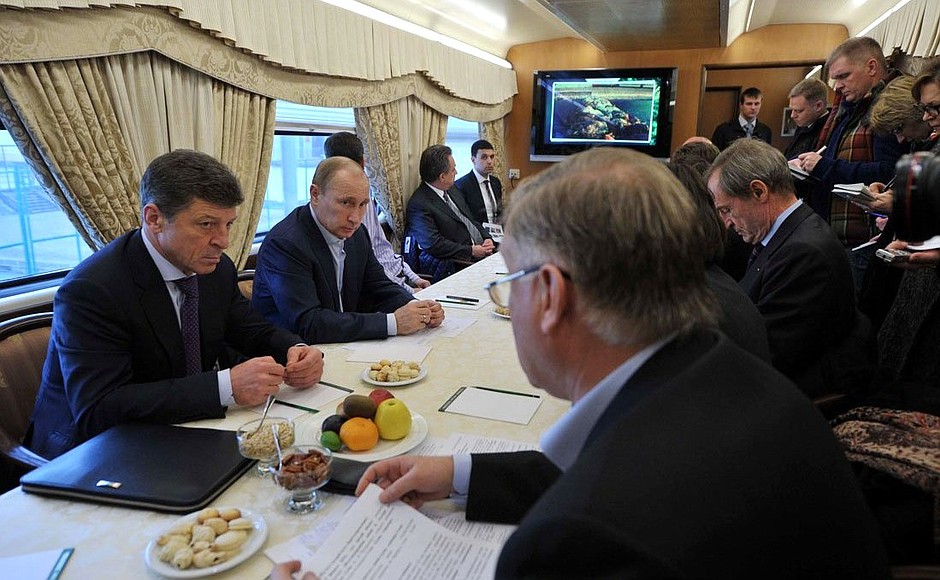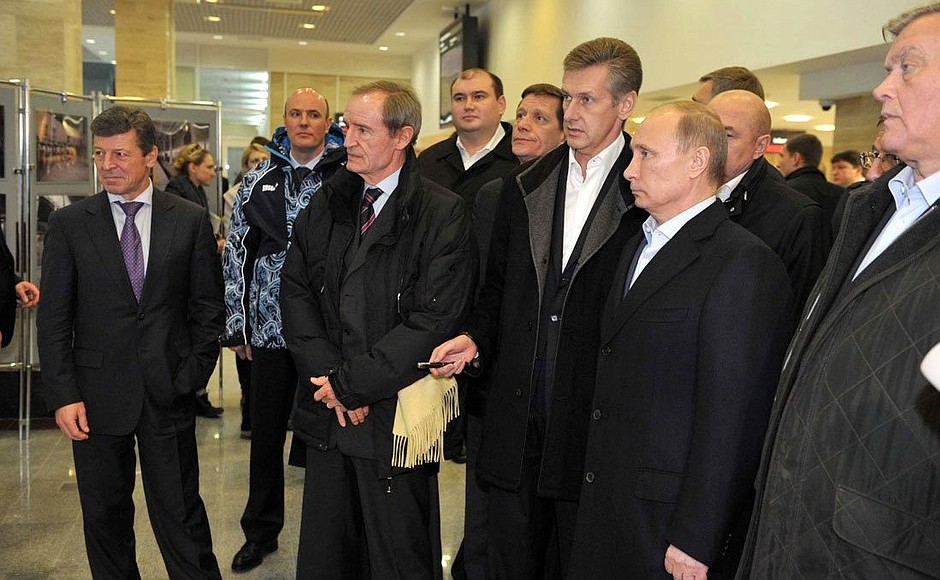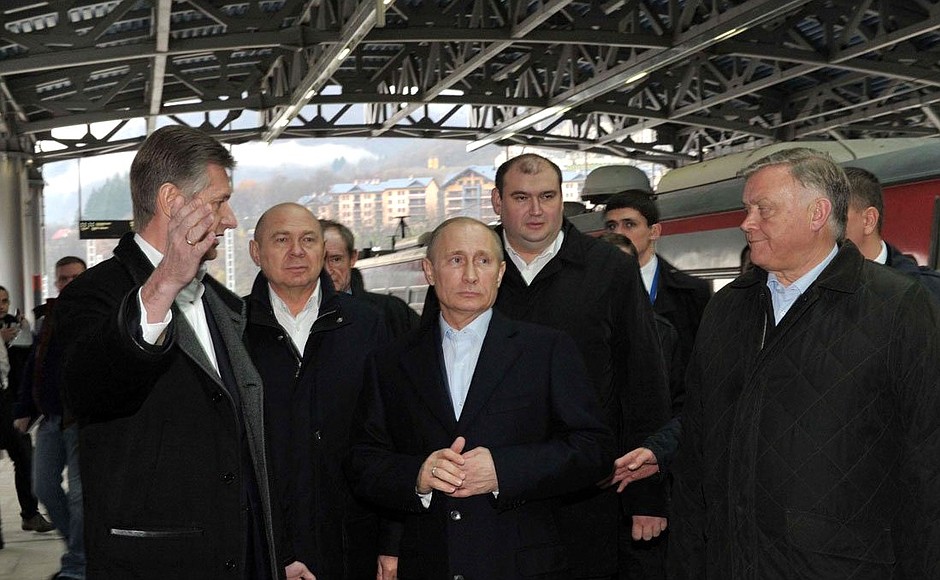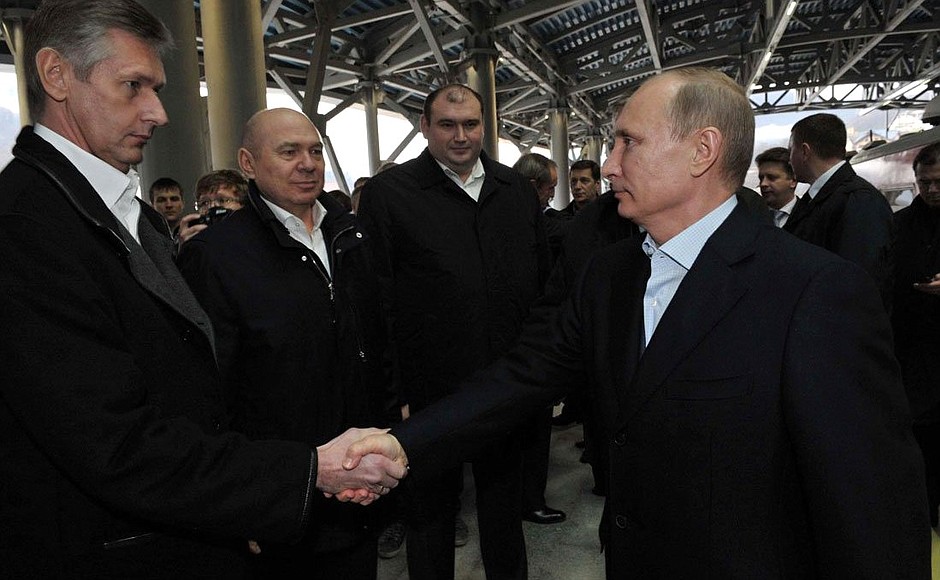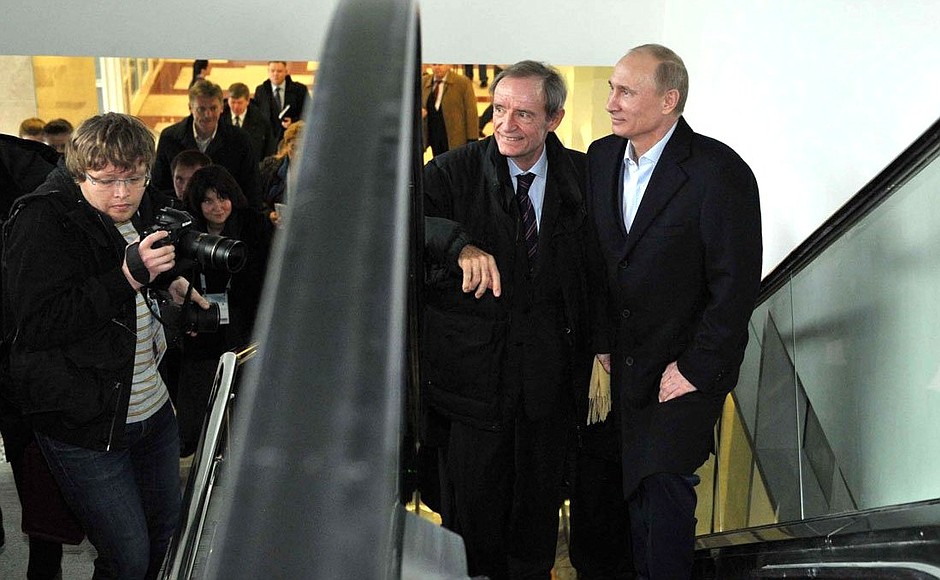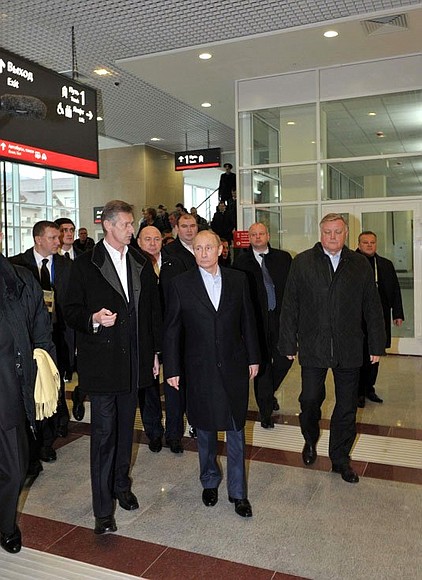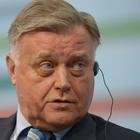The President held a meeting on the train while travelling along the new railway line connecting Sochi and Krasnaya Polyana.
A combined 48-kilometre railway and road project will be put into operation in April 2013. It is part of the new transport infrastructure designed to connect Adler, the Olympic Park and Krasnaya Polyana.
Mr Putin also visited the construction site of the railway station Esto-Sadok designed to handle 500 passengers.
* * *
President of Russia Vladimir Putin: Good afternoon, friends and colleagues,
I am very pleased to gather you all together and talk about how our project is being implemented. I am particularly pleased to do so in unusual circumstances: on the train.
Let me recall that during my speech in Guatemala [to the International Olympic Committee (IOC) in 2007], I promised that there would be no traffic jams during the Olympic Games. And I remember well that one of the most important tasks that the IOC set for the Olympic project early on was building a railway, two roads, and a rail line from Imeretin Valley to the nearby mountains. I must say that this is an expensive project and amid the global financial crisis, the question of how to implement it became particularly pointed for us.
I remember the IOC’s reaction and how our colleagues said that if it was too difficult we could manage without it, but we still wanted to have a railroad. The IOC did not insist on it, but in light of our interests – considering the fact that the future development of the mountainous areas will depend on our ability to carry a certain number of passengers from the Black Sea coast to the mountains – we nevertheless decided to implement the project and fulfil our original promise to the IOC.
This work is almost finished, 85 percent has been completed. I am pleased to be able to say that it is the result of cooperation between Russian experts and a large team of international specialists. A big international team worked on this project (and this was not easy from a technical point of view); experts from European countries, from Canada, all fully participated in this process.
All in all there are 48.2 kilometres of rail lines. Let me repeat: it is important for us not only to ensure that athletes, journalists, and Olympic guests can travel freely and easily from the Imeretin Valley to the mountains and back, but also to create opportunities for fully developing the mountain cluster in the future, long after the 2014 Games are over.
Work is proceeding according to plan. As I already said, the major parts of this work have been completed. We shall see this today. First, we will drive down virtually all routes and see what has been done in terms of infrastructure development. It is a source of pleasure and interest for me to look at this. How many tunnels are there, Mr Yakunin?
Russian Railways CEO Vladimir Yakunin: Six tunnels on this line and three on the other.
Vladimir Putin: So, that means nine tunnels were built. I must say that combining a railway line and a road in one tunnel makes this project unique. It is one that is not often implemented in other parts of the world, but it is an effective solution. Despite the fact that the project is not cheap, we have tried to do everything possible to minimise our costs for this portion of the Olympic project.
This is what I wanted to say at the outset. I am sure that we will fully implement all our plans, produce high-quality results, and do so on time.
Let’s talk some more about what has already been done and what remains to be done.
<…>
